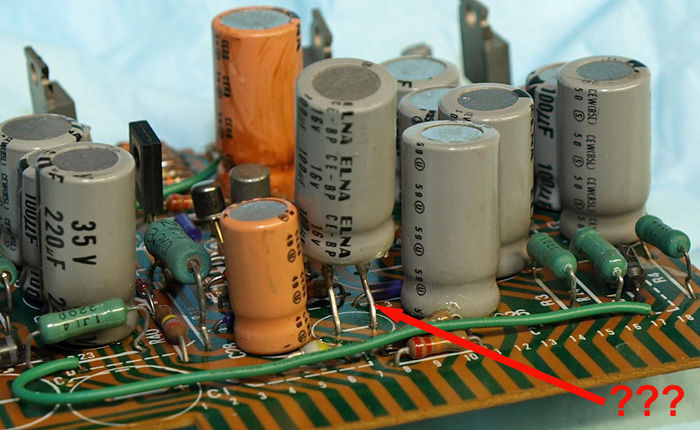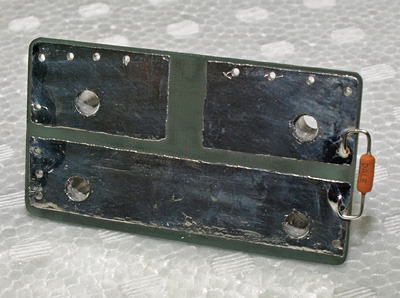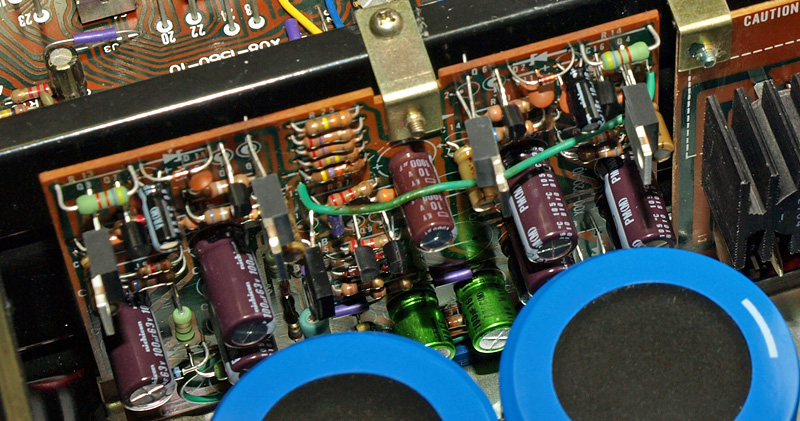
Power Supply
I have seen some strange things inside of stereos.
This was no exception. I found a capacitor raised
up on Stilts. Not sure why, as there appeared to be
room for the cap to sit on the board. This looked
like a factory capacitor, so I assume this came from
the factory this way... strange.
The board was cleaned and new caps, and zener
diodes were installed. The metal can transistors
were also replaced (2SA1015GR replaced 2SA620).
I also replaced a handful of resistors (you can see
some in the photo below on the top edge next to
the diodes).
I forgot to take a picture of the board after it was
completed so I snapped the shot below after I had
the unit back together.
This was no exception. I found a capacitor raised
up on Stilts. Not sure why, as there appeared to be
room for the cap to sit on the board. This looked
like a factory capacitor, so I assume this came from
the factory this way... strange.
The board was cleaned and new caps, and zener
diodes were installed. The metal can transistors
were also replaced (2SA1015GR replaced 2SA620).
I also replaced a handful of resistors (you can see
some in the photo below on the top edge next to
the diodes).
I forgot to take a picture of the board after it was
completed so I snapped the shot below after I had
the unit back together.
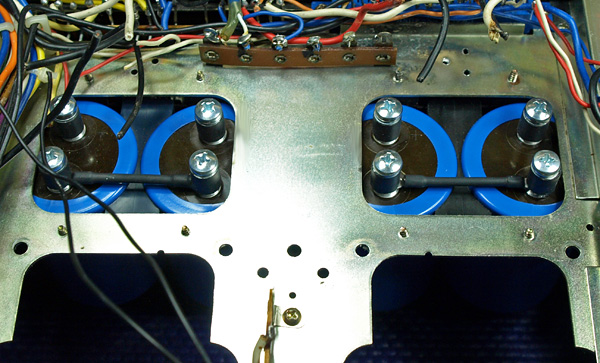
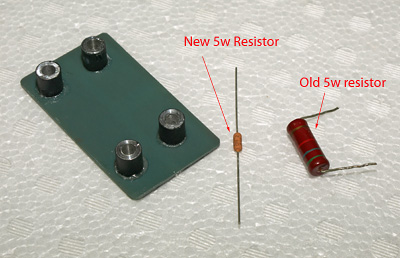
I decided to use a circuit board to mount the main supply caps and wires. This approach has several advantages. It allowed room for the many
wires that needed fastened, allowed some flexibility in wire routing, and simplified the task of hooking up the caps and wires (I did not have to
strip wires and crimp eyelet terminals all on those wires).
I etched a PCB form mil-spec board (thick 2mil coper plate). The aluminum standoffs were shortened and epoxied to the PCB. A smaller 5W 3.3k
ohm resistor (Dale) replaced the large clunker. Holes were drilled for the wires.
wires that needed fastened, allowed some flexibility in wire routing, and simplified the task of hooking up the caps and wires (I did not have to
strip wires and crimp eyelet terminals all on those wires).
I etched a PCB form mil-spec board (thick 2mil coper plate). The aluminum standoffs were shortened and epoxied to the PCB. A smaller 5W 3.3k
ohm resistor (Dale) replaced the large clunker. Holes were drilled for the wires.
I first started out thinking I could fasten eyelets terminals
and secure the wires to each post. I even made a strap
from 10ga sold wire and eyelets for the common capacitor
terminals. I turned some standoffs from aluminum bar stock
for each terminal post. All this was covered with shrink
tubing.
This looked nice and neat, but after counting all the wires
that needed connected I came to the conclusion that I just
could not fit all those eyelets onto the capacitor posts. So I
scrapped the idea.
Supply Capacitors

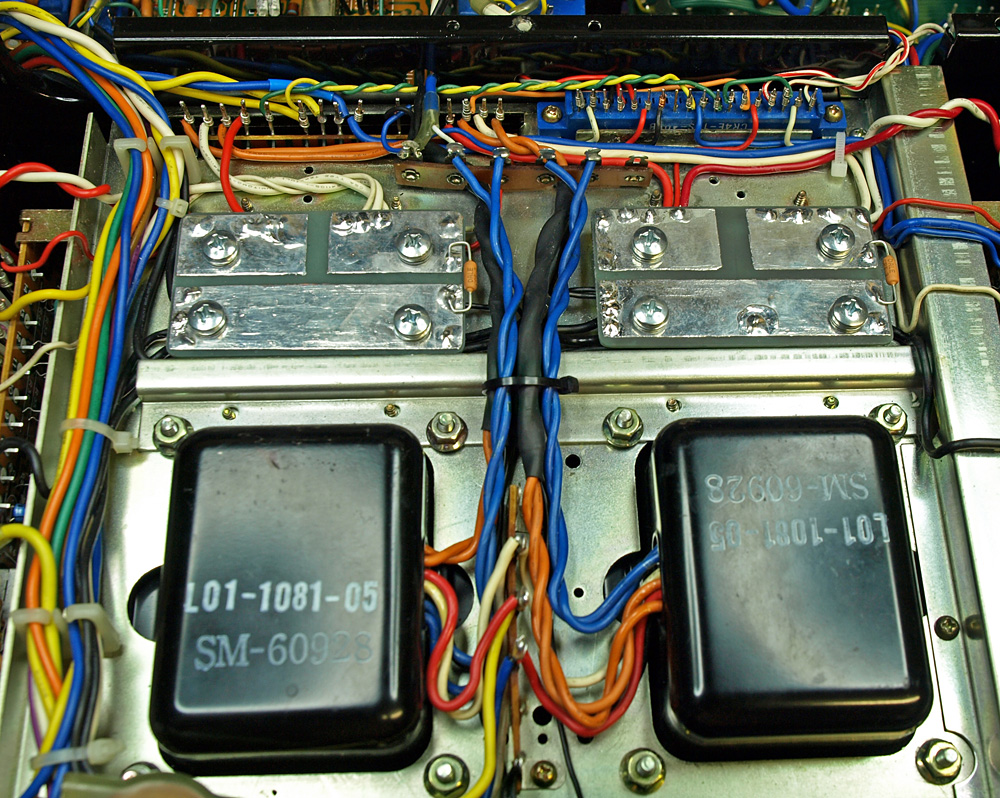
Well, it's not perfect, but it will be much easier for the next tech to work on. At least there is order to the wiring and is much easier on the
eyes. A couple of wires I left as they were, because they were too short and buried too deep in the harness to mess with (which is why the last
tech spliced in an extension on one). These were heavy 20awg wire so there was little chance of breaking, or fatiguing. So I left well-enough
alone. Everything else was re-worked. Refer back a few pages to compare this to the mess I started with.
eyes. A couple of wires I left as they were, because they were too short and buried too deep in the harness to mess with (which is why the last
tech spliced in an extension on one). These were heavy 20awg wire so there was little chance of breaking, or fatiguing. So I left well-enough
alone. Everything else was re-worked. Refer back a few pages to compare this to the mess I started with.
